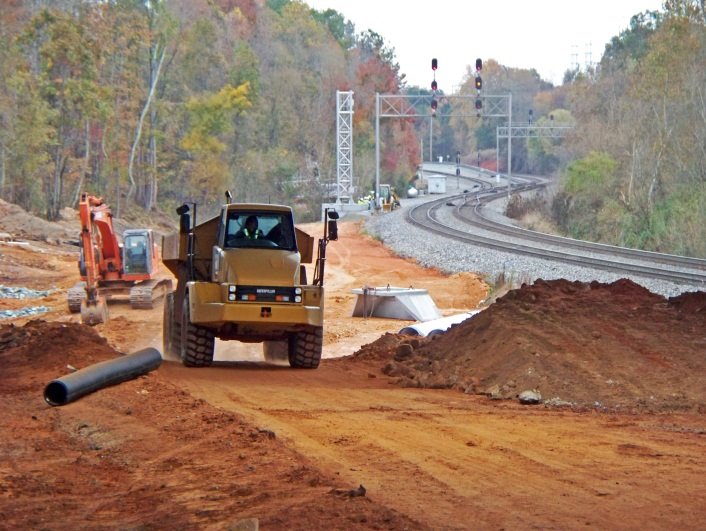
Technology drives creativity and quicker, more cost-effective projects. A step change for our industry.
See how we connect innovation to outcomes.

Expert insights on issues that transform business, increase sustainability and improve lives
Topics
Here’s a snapshot of what we’re thinking about. Explore these highlights or view the full library to dive deeper into the ideas shaping our work.

Meet some of our passionate problem-solvers, constructive creatives and inspiring innovators

Piedmont Improvement Program
Project Overview
- North Carolina
Opportunity
North Carolina has almost 3,300 miles (5,300 kilometers) of track, much of it used by both passenger and freight trains. Ridership on state-sponsored passenger trains is increasing. In 2012, the Piedmont train service, which runs between Charlotte and Raleigh, was number one in the nation in growth. With this increase, collisions between trains and other traffic continue to be a priority.
According to Pat Ivey, Division 9 Engineer for the North Carolina Department of Transportation (NCDOT), “Any time you’ve got a train or a pedestrian versus a vehicle, the train is always going to win… Our goal as a department and nationwide is to try to minimize the number of at-grade crossings...”
Solution
In 2010, the Federal Railroad Administration awarded North Carolina a grant of $546.5 million from the American Recovery and Reinvestment Act (ARRA). With the help of that funding, the state is undertaking a series of railroad and highway construction projects and enhancements, upgrading equipment, and improvements to passenger facilities called the Piedmont Improvement Program.
That same year, Mott MacDonald was retained by NCDOT as a prime, responsible for program management and construction oversight. The scope of work included the following:
- Coordinate with Federal Railroad Administration, Amtrak, North Carolina Railroad Company, Norfolk Southern, and CSX Transportation for railroad upgrades to support expanded intercity passenger rail
- Assist in negotiations for railroad contracts and environmental right of entry agreements, right-of-way purchasing agreements, and coordination of utility permits
- Assist with the monitoring/management of the overall program budget, including the generation of a program-level cash curve of actual vs. anticipated expenditures that has been adopted by the Federal Rail Administration for its entire portfolio of projects in all states
- Create and maintain an updated schedule using location/time scheduling software
The goals of the Piedmont Improvement Program included renovating four train stations, closing 23 public railroad crossings, and adding 13 new bridges, 12 miles (19 kilometers) of new highway, 32 miles (51 kilometers) of sidings and parallel track, and two additional passenger train trips per day between Raleigh and Charlotte.

Outcome
Construction on the Piedmont Improvement Program was completed in 2018. According to NCDOT, the program “will make train travel safer and more reliable, enhance opportunity for greater job growth and commercial development and better connect the economic regions of Raleigh and Charlotte and the cities, towns and communities in between.”
Steve Sciascia, mayor of Harrisburg, said, “We’re able to obviously have no accidents from trains, which is a great thing. The movement of traffic is phenomenal, along with our public safety police and firemen having the ability to get through an intersection a lot quicker with no trains impeding it.”
Any time you’ve got a train or a pedestrian versus a vehicle, the train is always going to win… Our goal as a department and nationwide is to try to minimize the number of at-grade crossings...Pat IveyDivision 9 Engineer for the North Carolina Department of Transportation (NCDOT)